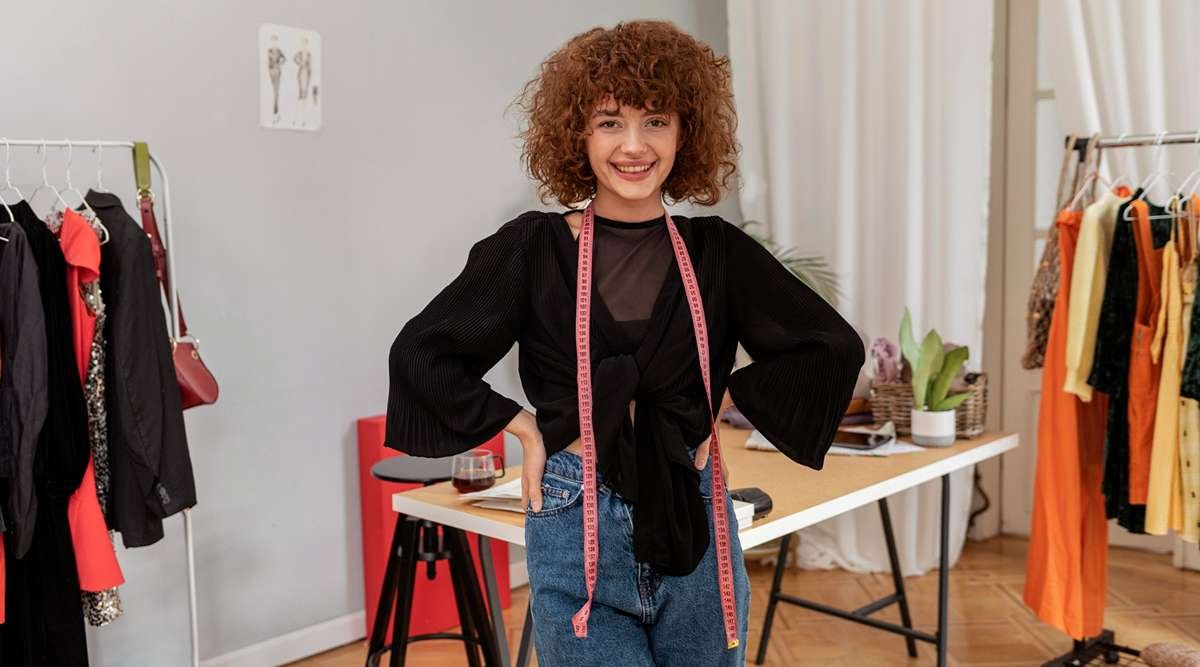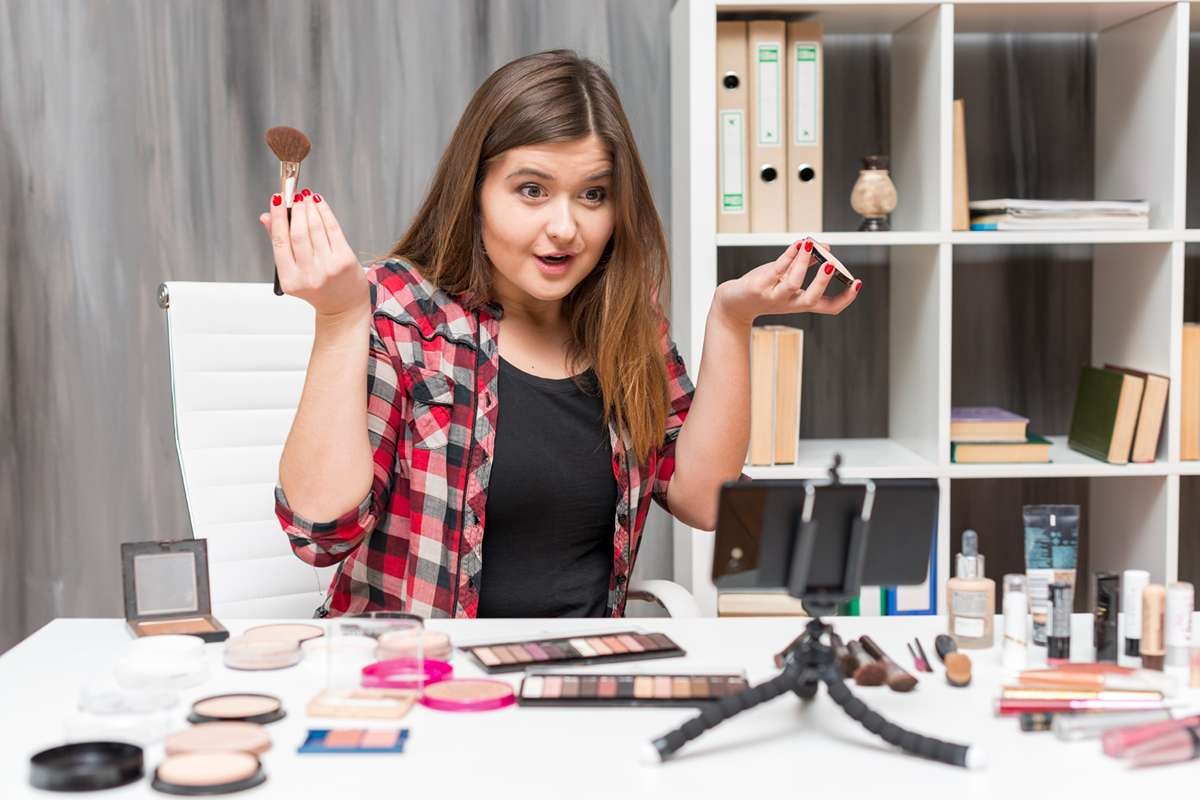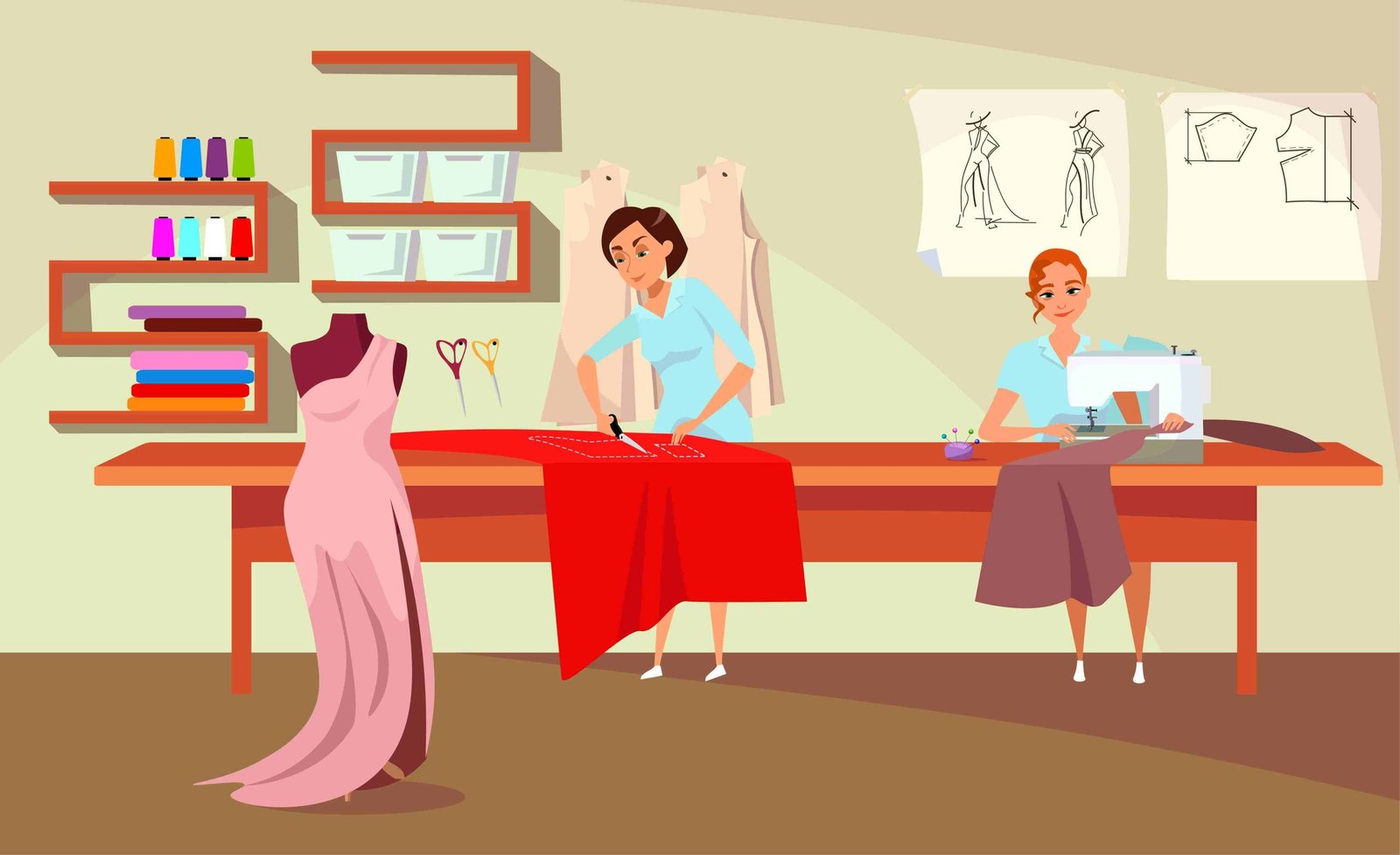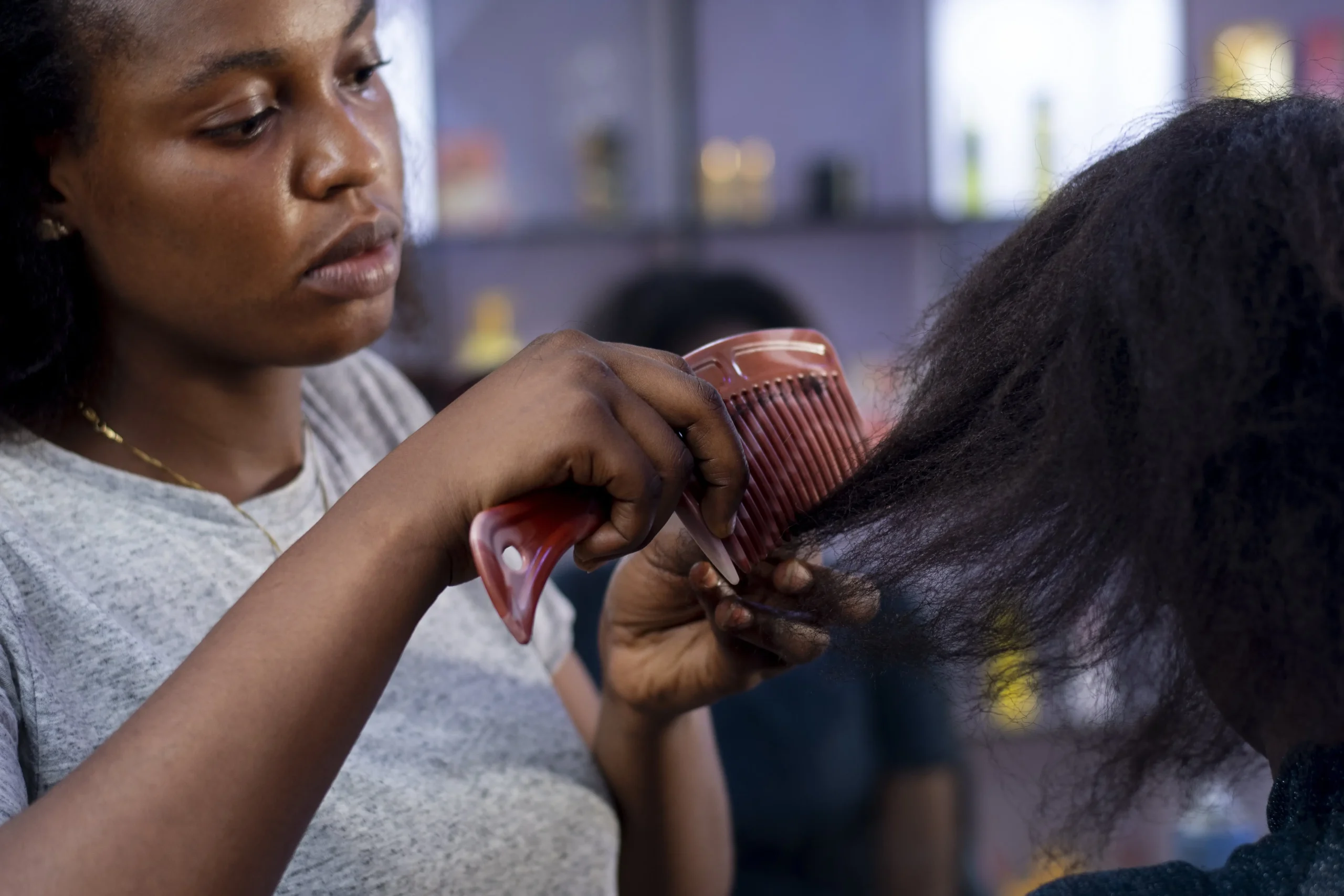
So, you wanna be a fashion hairstylist? It’s not all red carpets and runway shows — sometimes it’s steamed clothes and last-minute chaos, but if you’ve got an eye for style and love making people feel amazing, it’s one of the coolest jobs out there. You don’t need to go to a fancy academy or have a big following to get started. In fact, most hairstylists start small, learn on the go, and make from scrape. Whether you dream of fashion design or just want to teach everyday people, then’s how to come a fashion hairstylist simple way, no fancy talk.
What Exactly Does a Fashion Stylist Do?
Okay, let’s clear one thing up: fashion styling isn’t just about picking a cute top to go with jeans. A fashion stylist helps people look and feel their best by choosing the right clothing and accessories for their personality, body shape, and occasion. They work behind the scenes at photoshoots, style models for runway shows, prep celebrities for red carpet events, or help regular folks upgrade their wardrobes. Stylists also research trends, pull pieces from designers or stores, and sometimes even steam clothes or pin them just right for that perfect shot. It’s creative, hands-on, and honestly, never boring.
Types of Fashion Stylists
Not all fashion stylists do the same job. Some work with celebrities and dress them for red carpet events. Others are editorial stylists, creating bold looks for magazine covers and fashion spreads. A personal stylist helps everyday clients shop, mix outfits, and feel confident in their skin. Then there are virtual stylists, who give online advice and style tips without even meeting the client in person. You also have wardrobe consultants, who organize closets and create full outfit plans. Oh and let’s not forget personal shoppers, who help clients find the right clothing and accessories for special events or daily wear.
Do You Need a Degree to Become a Stylist?

Pros of Taking Degree Programs
No, you don’t have to go to college to become a fashion stylist—but getting a degree can definitely open doors. If you’re serious about making this your full-time career, enrolling in a fashion design or fashion merchandising program can teach you the essentials: color theory, trend forecasting, garment construction, and how the fashion industry works behind the scenes. Many degree programs also include styling-focused courses where you’ll learn how to work with clients, create mood boards, and build a solid portfolio. Plus, schools often help with networking and internships so yeah, it’s not a bad route if you can afford it.
How to Start Without a Degree
Now here’s the truth you don’t need a fancy degree to get started not at all. Tons of amazing stylists learned everything on their own using free or low-cost resources. YouTube is packed with styling tutorials, and platforms like Skillshare, Coursera, or even TikTok offer online courses that break things down in a way that’s easy to follow. You can also volunteer, intern for local boutiques, or assist other stylists to get real-world experience. The key is to start small, practice a lot, and stay curious. If you’re passionate and put in the work, you can totally make it without school.
Learn the Skills That Actually Matter

Style Basics You Can’t Skip
If you’re serious about becoming a stylist, there are a few basics you can’t ignore—no matter how trendy you are. First up color theory. You need to understand how colors work together and how they look on different skin tones. Next? Body shape analysis. Every body is different, and knowing how to dress different shapes is what separates a pro from an amateur. Add in a little fabric knowledge so you don’t pair stiff denim with delicate silk, and you’re golden. Learning to layer pieces, match accessories, and forecast trends will take your fashion styling game to the next level.
Tools of the Trade
Every stylist has their go-to tools and no, we’re not talking about scissors and sewing kits. Think Pinterest boards to collect outfit inspo, lookbooks to pitch ideas to clients, and digital styling apps that let you plan entire wardrobes on your phone. You’ll also want to track fashion weeks and social media trends for trend forecasting, and maybe even build your own outfit templates in Canva or Notion. These tools make your life easier and help you show off your ideas like a total pro.
Build a Killer Styling Portfolio (Even With No Clients)
How to Start from Scratch
No clients yet? No problem. Every great stylist started with… well, nothing. You can kick things off by using your own wardrobe. Style outfits on yourself or your friends and snap some clean, well-lit photos. Ask a few friends with different body types to let you experiment—this shows your range and your understanding of real-world fashion. Wanna level it up? Team up with local photographers, makeup artists, or even student models. A simple backyard shoot can look high-end with the right lighting and creativity. Don’t wait for a paid job to start building—just start.
Tips to Make Your Portfolio Pop
Once you’ve got some images, it’s time to make that portfolio pop. Start with before-and-after shots to show how your styling transforms someone’s look. Create moodboards that reflect different vibes like streetwear, minimalism, or glam. Add outfit breakdowns with short notes explaining your choices, and if you’re feeling fancy, mock up client profiles and style them based on personality, body shape, or occasion. These small touches show off your eye for detail and help potential clients or employers see what you can bring to the table. Think of your portfolio as your personal fashion magazine it should scream you.
Getting Your First Styling Job or Client
When you’re starting out, one of the first questions you’ll face is should I go freelance or work for a company? Both paths are legit, and honestly, you can even do a mix of both. As a freelance stylist, you have the freedom to choose your clients, set your own rates, and work on your terms. But if you prefer stability, in-house roles with eCommerce fashion brands, magazines, or retail stores can give you regular work and valuable experience. Some stylists also start out assisting others to get their foot in the door which is a great way to learn fast without pressure.
Where to Find Clients
Clients aren’t going to magically show up—especially when you’re new but don’t stress. You just have to know where to look. Instagram is your best friend. Share your outfits, behind-the-scenes shots, and styling tips to attract attention. Join Facebook groups related to fashion, style, or local creatives tons of people there are looking for help. Check out local events like pop-up shops or runway shows and start networking. There are also platforms that connect virtual stylists with clients who need remote help. Oh, and don’t forget modeling agencies many are open to new stylists looking to build their books. Put yourself out there and stay consistent.
How to Start Your Styling Business (Without Overthinking It)

Starting your styling biz might sound overwhelming, but trust me—it’s not as scary as it seems. You don’t need a fancy office or a team. All you really need is a plan, a little legal setup, and a smart way to show off your work. Most beginner stylists skip this part, but if you wanna stand out (and get paid like a pro), treat it like a real business from day one.
Legal Stuff Simplified
Let’s break it down in plain English—here’s the basic stuff you need to make your business official:
| Step | What It Means (Simple Version) |
| Register your name | Choose a business name and register it with your local gov. |
| Set basic pricing | Make a simple price list (hourly or by package) |
| Business bank account | Keep your biz money separate from your personal funds |
| Create service list | Write down exactly what you offer (e.g., closet edits, event styling) |
| Contracts (optional but smart) | Use a simple agreement so both sides know what to expect |
This stuff sounds boring but it makes you look way more professional, and people trust stylists who treat it like a real job.
Marketing Like a Human
Now the fun part—getting noticed. You don’t need a big marketing budget, just some creativity and consistency:
| Platform/Tool | What To Do |
| Instagram Reels | Post short clips showing your styling tips, outfit ideas, or before/afters |
| TikTok | Share quick styling hacks, outfit challenges, or trend reactions |
| Mini website | Use free tools like Carrd, Wix, or Notion to create a one-page site |
| Canva/Portfolio PDF | Make a clean, stylish PDF of your work to send to clients |
| Email or DMs | Reach out to photographers, models, or small brands to collab |
Just be yourself talk like a real person, show your personality, and don’t worry about being perfect. People connect with authentic stylists, not polished robots.
How to Stay Inspired and Keep Growing

So you’ve started styling awesome! But the real magic happens when you keep learning and stay inspired. The fashion industry moves fast, and if you’re not paying attention, it’s easy to feel stuck or behind. The good news? Staying fresh and creative doesn’t mean burning yourself out it just means being curious and surrounding yourself with inspiration.
Watch Runway Shows & Read Fashion Mags
Wanna know where trends really start? Runway shows. Whether it’s Paris Fashion Week or a small designer debuting on YouTube, these shows shape what’s next in fashion. Watch how designers layer pieces, use colors, and tell stories through clothes—it’ll spark tons of styling ideas. Also, don’t sleep on fashion magazines like Vogue, Elle, or Harper’s Bazaar. Even scrolling their websites can keep you in tune with what’s happening in the fashion industry. Oh, and influencers? They’re basically walking trend reports, especially on TikTok and Instagram.
Follow Stylists You Admire
Find stylists whose work makes you go, “Dang, I wish I styled that,” and follow them. Not just for the pretty pics, but to study their work. Look at how they mix patterns, use accessories, or pose their clients. If you’re feeling bold, reach out and say hi—you never know who might offer advice or mentorship. Also, join styling groups online or local fashion communities. Connecting with other creatives is one of the best ways to grow. No one succeeds alone in this game.
What It’s Actually Like Being a Stylist

Let’s be honest being a stylist sounds super glamorous, right? And sometimes it is. But like any creative job, it has its highs and lows. Most people only see the finished photoshoot or the red carpet moment. What don’t they see? The hours of prep, last-minute chaos, and hustle it takes to pull it all together. So here’s the honest scoop—both the dreamy parts and the not-so-pretty ones.
The Good Stuff
One of the best things about being a fashion stylist? Creative freedom. You get to express your ideas through clothes, colors, and textures, it’s literally like art you can wear. You’ll meet some really cool people along the way too, photographers, models, designers, even clients who become friends. And if you play your cards right, you might get to travel for jobs or style events in amazing locations. There’s nothing quite like the feeling of seeing your vision come to life on set or on someone walking out the door with new confidence.
The Not-So-Glam Bits
Now for the reality check. Styling isn’t always fun and fabulous. There are long days, like 12-hour shoots where you’re standing the whole time, steaming outfits, or running around grabbing safety pins. Some clients can be picky, and yeah, you’ll deal with rejection sometimes. Jobs will fall through, or someone else will get picked. That part stings. But even with all that, if you really love styling, you’ll stick with it. Because at the end of the day, helping someone feel amazing in what they’re wearing? Totally worth it.
FAQs
Q1: How do I start being a fashion stylist?
Start by learning the basics, like color theory and body shape analysis. Practice on friends, build a small portfolio, and share your work on Instagram. You don’t need a degree to begin, just consistency and passion.
Q2: What qualifications do you need to become a stylist?
There’s no official qualification required, but skills in fashion design, trend forecasting, and outfit coordination really help. You can learn through online courses, free resources, or hands-on experience.
Q3: What degree is required to be a fashion stylist?
You don’t need a specific degree, but studying fashion design or fashion merchandising through degree programs can give you a head start. It’s helpful, but not a must.
Q4: How much do you get paid as a fashion stylist?
Stylists can earn anywhere from $15/hour to $150/hour, depending on their experience, location, and clients. Celebrity and high-end stylists often make much more.
Q5: Do fashion stylists make money?
Yes, fashion stylists can make good money, especially once they build a client base. Many earn through freelance gigs, virtual styling, or partnerships with eCommerce fashion brands.
Q6: How do I start my career in fashion?
Start small. Take online courses, volunteer at shoots, and build your portfolio. Networking with people in the fashion industry helps open doors faster.
Q7: Is fashion stylist a good career?
If you love fashion and enjoy helping others express themselves, it’s a great career. It’s creative, flexible, and full of growth opportunities—though it takes hustle.
Q8: Can I become a fashion stylist with no experience?
Absolutely! Many stylists start with no experience by practicing at home, working with friends, and learning through free online content. Your work speaks louder than a resume.
Q9: How do I get styling clients online?
Post your work on platforms like Instagram and TikTok, join Facebook groups, and try virtual styling apps. Being active and visible online helps attract your first few clients.
Q10: What’s the difference between a fashion stylist and a personal stylist?
A fashion stylist usually works on photoshoots, media, or runway shows, while a personal stylist focuses on helping individuals with their everyday wardrobes and shopping.
Conclusion
Becoming a fashion stylist isn’t magic it takes hustle, creativity, and constant practice. You don’t need a fancy background in the fashion industry to make it; you just need the guts to start and the patience to grow. Keep styling, keep learning, and don’t be afraid to mess up. Over time, you’ll figure out your voice and vibe, and turn your love for fashion into something real. If you’ve been wondering how to become a fashion stylist, now you’ve got your roadmap—so go for it.



